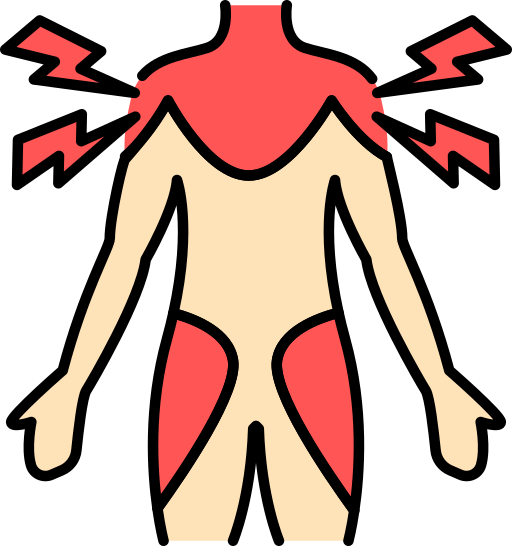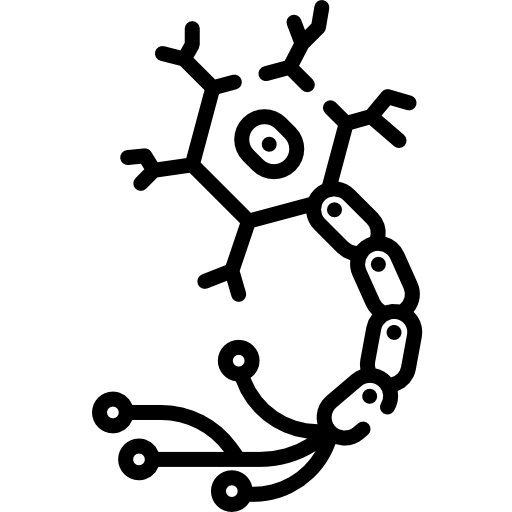MPS III -Sanfilippo Syndrome
Mucopolysaccharidosis type III (MPS III), also known as Sanfilippo syndrome, is a rare, inherited lysosomal storage disorder that primarily affects the central nervous system (CNS). It is caused by a deficiency in one of four enzymes responsible for breaking down heparan sulfate, a type of glycosaminoglycan (GAG). This results in toxic accumulation of partially degraded GAGs inside lysosomes, leading to progressive neurodegeneration and severe cognitive and physical decline.
There are four subtypes of MPS III, each caused by a deficiency in a different enzyme:
MPS IV has two subtypes:
Type A – Heparan N-sulfatase deficiency
Type B – α-N-acetylglucosaminidase deficiency
Type C – Acetyl-CoA:α-glucosaminide N-acetyltransferase deficiency
Type D – N-acetylglucosamine 6-sulfatase deficiency
Although the specific enzyme deficiency varies, all subtypes lead to similar symptoms and disease progression.


1 in 50,000
to 1 in 600,000 live births
Causes and Pathophysiology
In healthy individuals, lysosomal enzymes continuously break down heparan sulfate into smaller components that can be recycled or removed from cells. In MPS III, defective or absent enzymes prevent complete breakdown, causing heparan sulfate accumulation. This build-up:

Cell function disruption
Disrupts normal cell function

Inflammatory stress
Triggers inflammation and oxidative stress

Neuron degeneration
Causes progressive neuron loss in the brain

Systemic progression
Leads to multi-system involvement over time
Unlike other mucopolysaccharidoses, MPS III symptoms are predominantly neurological rather than skeletal.
Signs and Symptoms
Symptoms usually appear between 2 and 6 years of age, after a period of apparently normal development.
Early symptoms:
- Speech delay and language regression
- Behavioural problems resembling autism or ADHD
- Sleep disturbances
Progressive symptoms:
- Loss of cognitive skills and mobility
- Seizures
- Motor dysfunction (spasticity, ataxia)
- Hearing and vision loss
- Swallowing difficulties
Late-stage symptoms:
- Severe motor impairment
- Total loss of speech
- Dependence on full-time care
- Reduced lifespan, often into late teens or early twenties
Diagnosis
Diagnosis often involves:

Urinary GAG analysis
– Detects elevated heparan sulfate.

Enzyme activity testing
– Confirms the deficient enzyme subtype

Genetic testing
– Identifies the specific mutation.

Neuroimaging
– MRI may reveal cerebral atrophy and white matter changes
Due to its overlap with autism and other developmental disorders, MPS III is often diagnosed late, delaying access to supportive care and clinical trials.
Current Treatment Landscape
There is currently no approved disease-modifying treatment for MPS III. Care is supportive and aimed at symptom management, including:
- Behavioural therapy
- Antiepileptic drugs for seizures
- Feeding support
- Physiotherapy
Intravenous or intrathecal enzyme replacement therapy (ERT)
– Challenged by blood–brain barrier penetration.
Gene therapy
– Viral vector delivery to the CNS to provide a functional enzyme gene.
Substrate reduction therapy (SRT)
– Lowering heparan sulfate production.
Unmet Needs
- Therapies capable of crossing the blood–brain barrier to halt or reverse CNS symptoms.
- Earlier diagnosis through newborn screening.
- Global access to clinical trials for rare disease populations.
There are no current disease-modifying therapies capable of preventing skeletal deterioration, and no CNS-penetrating therapies are required for this condition since cognition is usually preserved.
Dawn Therapeutics’ Approach
At Dawn Therapeutics, our mission is to develop CNS-penetrating gene and RNA therapies to target the root cause of Sanfilippo syndrome:

Precision Delivery
Our proprietary vectors are engineered to efficiently cross the blood–brain barrier and deliver genetic instructions to affected neurons and glial cells.

Durable Effect
Designed for single-dose administration to provide sustained enzyme production.

Systemic Reach
Potential to address peripheral symptoms by targeting other affected organs such as the liver and heart.

Platform Adaptability
The same delivery platform can be tailored for each of the four MPS III subtypes.
